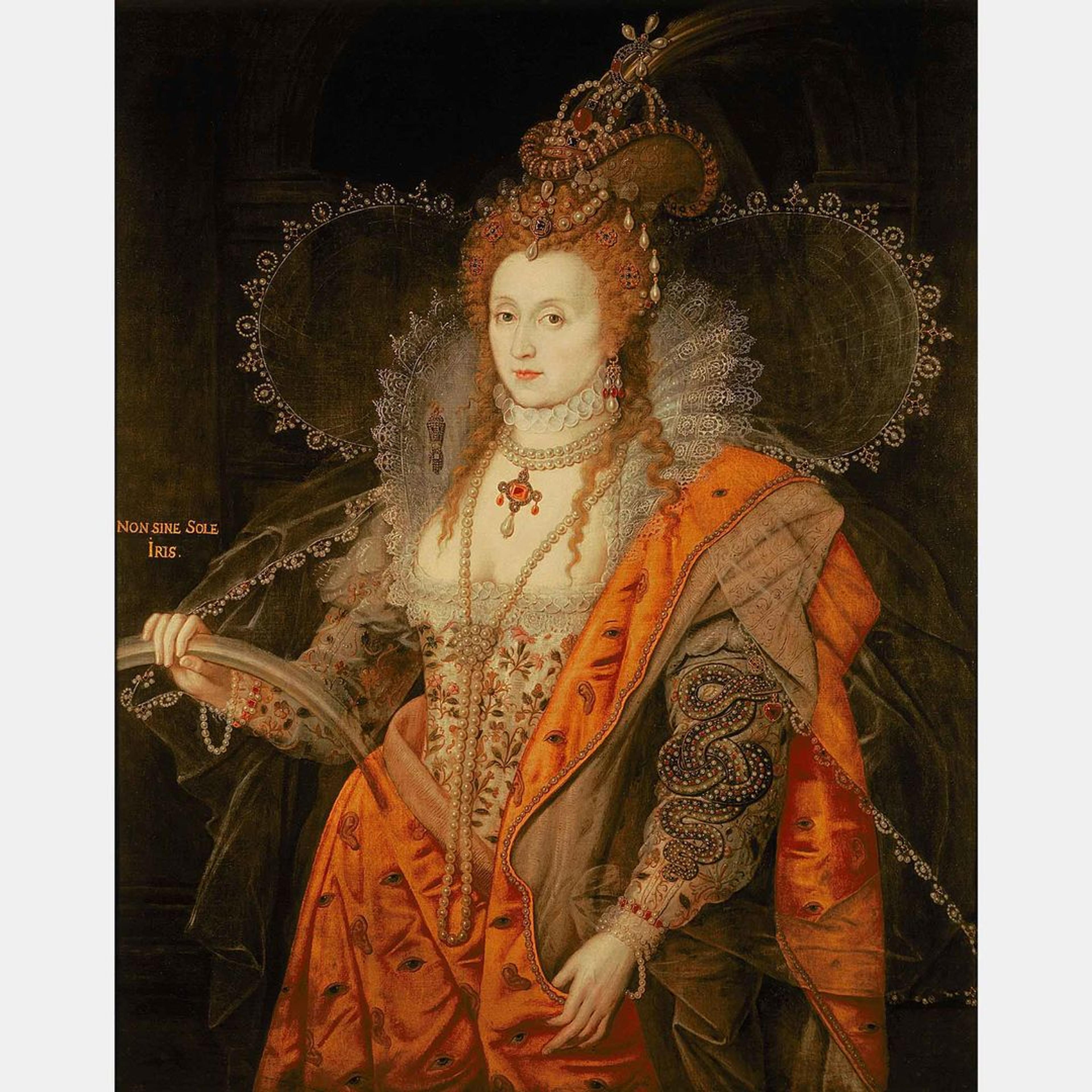Audio Guide

592. Queen Elizabeth I (“The Rainbow Portrait”), Attributed to Marcus Gheeraerts the Younger, ca. 1600
ADAM EAKER:
This painting, perhaps more than any other, captures Elizabeth as she wanted to be perceived at the very end of her life. So, she’s shown as a ravishing redheaded beauty in a kind of theatrical dress.
NARRATOR:
By the end of Elizabeth’s reign, royal portraits were using complex symbols and allegory to convey the desired image. Here, Elizabeth’s dress is decorated with eyes and ears. Adam Eaker.
ADAM EAKER:
The imagery of the eyes and the ears: it may allude to the fact that she sees everything, she hears everything, she’s omniscient. She’s holding a rainbow as a kind of attribute. And then just above her hand, we have a Latin inscription saying, ‘There is no rainbow without the sun’, again emphasizing Elizabeth’s status as the sun, the source of light.
NARRATOR:
On her sleeve is a richly embroidered serpent.
ADAM EAKER:
Serpents are associated with wisdom in a tradition going back to the Bible. And this serpent frequently appears in Elizabethan imagery as a sign of the Queen’s wisdom with which she navigated very treacherous political waters.
NARRATOR:
Like her half sister Mary before her, Elizabeth faced the challenge of ruling as a woman in a male-dominated society. Her famous speech to the English troops makes conscious reference to this:
FEMALE VOICE:
I know I have the body but of a weak and feeble woman: but I have the heart and stomach of a king—and a king of England, too.
NARRATOR:
One major cause of political tension was the succession. With Elizabeth, the Tudor dynasty was coming to an end.
ADAM EAKER:
I think some of the mystification that goes on in these portraits is an effort to counteract that anxiety, to rewrite the aging and childless queen as an ageless and supernaturally powerful figure who will always be present and able to shine light on the English people.
###